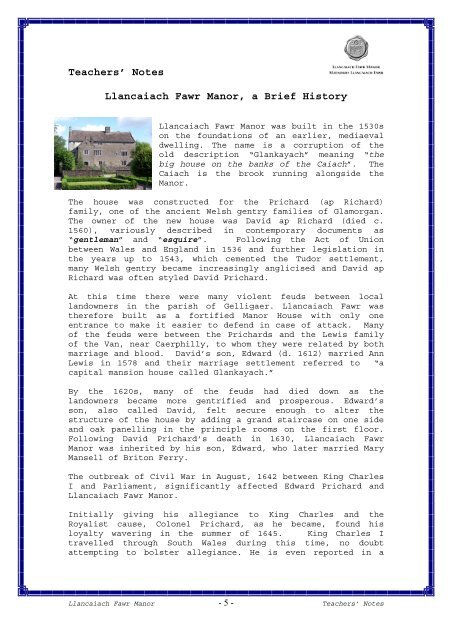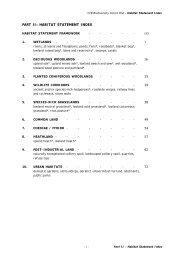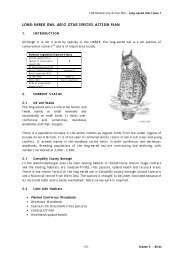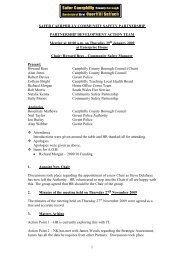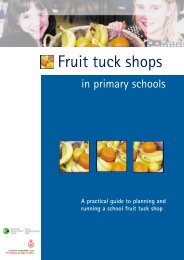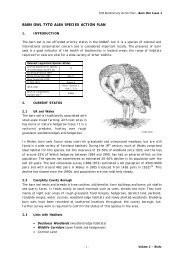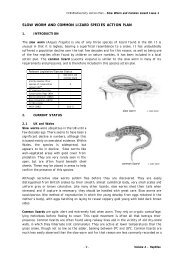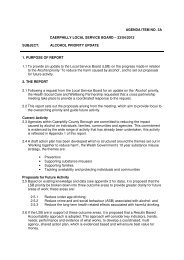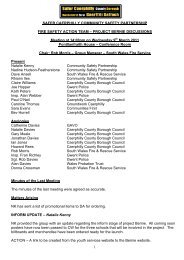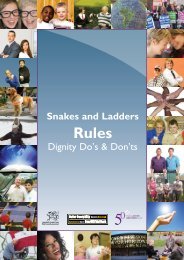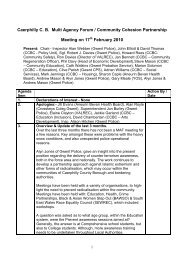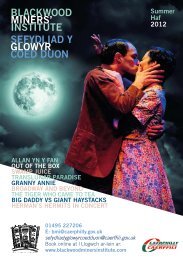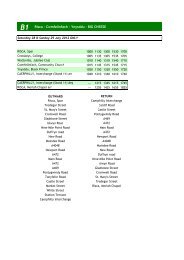Teachers' Notes Llancaiach Fawr Manor, a Brief History
Teachers' Notes Llancaiach Fawr Manor, a Brief History
Teachers' Notes Llancaiach Fawr Manor, a Brief History
Create successful ePaper yourself
Turn your PDF publications into a flip-book with our unique Google optimized e-Paper software.
Teachers’ <strong>Notes</strong><br />
<strong>Llancaiach</strong> <strong>Fawr</strong> <strong>Manor</strong>, a <strong>Brief</strong> <strong>History</strong><br />
<strong>Llancaiach</strong> <strong>Fawr</strong> <strong>Manor</strong> was built in the 1530s<br />
on the foundations of an earlier, mediaeval<br />
dwelling. The name is a corruption of the<br />
old description “Glankayach” meaning “the<br />
big house on the banks of the Caiach”. The<br />
Caiach is the brook running alongside the<br />
<strong>Manor</strong>.<br />
The house was constructed for the Prichard (ap Richard)<br />
family, one of the ancient Welsh gentry families of Glamorgan.<br />
The owner of the new house was David ap Richard (died c.<br />
1560), variously described in contemporary documents as<br />
“gentleman” and “esquire”. Following the Act of Union<br />
between Wales and England in 1536 and further legislation in<br />
the years up to 1543, which cemented the Tudor settlement,<br />
many Welsh gentry became increasingly anglicised and David ap<br />
Richard was often styled David Prichard.<br />
At this time there were many violent feuds between local<br />
landowners in the parish of Gelligaer. <strong>Llancaiach</strong> <strong>Fawr</strong> was<br />
therefore built as a fortified <strong>Manor</strong> House with only one<br />
entrance to make it easier to defend in case of attack. Many<br />
of the feuds were between the Prichards and the Lewis family<br />
of the Van, near Caerphilly, to whom they were related by both<br />
marriage and blood. David’s son, Edward (d. 1612) married Ann<br />
Lewis in 1578 and their marriage settlement referred to “a<br />
capital mansion house called Glankayach.”<br />
By the 1620s, many of the feuds had died down as the<br />
landowners became more gentrified and prosperous. Edward’s<br />
son, also called David, felt secure enough to alter the<br />
structure of the house by adding a grand staircase on one side<br />
and oak panelling in the principle rooms on the first floor.<br />
Following David Prichard’s death in 1630, <strong>Llancaiach</strong> <strong>Fawr</strong><br />
<strong>Manor</strong> was inherited by his son, Edward, who later married Mary<br />
Mansell of Briton Ferry.<br />
The outbreak of Civil War in August, 1642 between King Charles<br />
I and Parliament, significantly affected Edward Prichard and<br />
<strong>Llancaiach</strong> <strong>Fawr</strong> <strong>Manor</strong>.<br />
Initially giving his allegiance to King Charles and the<br />
Royalist cause, Colonel Prichard, as he became, found his<br />
loyalty wavering in the summer of 1645. King Charles I<br />
travelled through South Wales during this time, no doubt<br />
attempting to bolster allegiance. He is even reported in a<br />
<strong>Llancaiach</strong> <strong>Fawr</strong> <strong>Manor</strong> - 5 - Teachers’ <strong>Notes</strong>
Teachers’ <strong>Notes</strong><br />
contemporary account to have stopped at <strong>Llancaiach</strong> <strong>Fawr</strong> en<br />
route to Brecon, dining there with Edward Prichard:<br />
August 5 th<br />
1645. Tuesday. Glancayach. Mr Prichard’s. Dinner.<br />
At Brecknock, the Governor. Supper. i<br />
However, the King’s visit to <strong>Llancaiach</strong> did not prevent<br />
Colonel Prichard from changing sides and by the autumn of<br />
1645, he was a committed Parliamentarian, becoming Governor of<br />
Cardiff Castle. With his brother-in-law, Bussy Mansell,<br />
Colonel Prichard became an important Parliamentary figure in<br />
South Wales. He died in 1655.<br />
<strong>Llancaiach</strong> <strong>Fawr</strong> was owned by many different families over the<br />
ensuing centuries until it was bought by Rhymney Valley<br />
District Council in 1979. Following an extensive period of<br />
restoration, it was opened as a visitor attraction in 1991.<br />
Today, visitors can experience life in <strong>Llancaiach</strong> <strong>Fawr</strong> <strong>Manor</strong><br />
as it would have been in the year 1645, when it was lived in<br />
by Colonel Edward Prichard and his family.<br />
<strong>Llancaiach</strong> <strong>Fawr</strong> <strong>Manor</strong> - 6 - Teachers’ <strong>Notes</strong>
Teachers’ <strong>Notes</strong><br />
The Prichard family tree 1521-1655<br />
Lewis ap Richard Gwyn m 1. a daughter of Lewis ap<br />
Rosser of Merthyr Tydfil<br />
of Pont Rhun<br />
& Merthyr Tydfil<br />
(d 1521)<br />
2.Gwladys, daughter of Evan ap John of<br />
Pencellyn<br />
Richard ap Lewis<br />
Edward ap Lewis<br />
12 other children<br />
David ap Richard / Prichard, first owner of <strong>Llancaiach</strong> <strong>Fawr</strong><br />
Lewis family of the Van<br />
(d. 1560)<br />
Edward Prichard of “Glancayach” m 1. Mary,<br />
daughter of John Carne of Nash<br />
(d.1612)<br />
(c 1578)<br />
2. Ann, daughter of Thomas Lewis<br />
of the Van<br />
3. Mary, daughter of Edmund<br />
Morgan<br />
David Prichard of <strong>Llancaiach</strong> m 1. a<br />
daughter of Sir George Herbert of Nash<br />
(d.1630)<br />
2. Mary, daughter of William<br />
Carne of Nash<br />
William Thomas John<br />
Elizabeth<br />
Edward, Colonel Prichard m Mary<br />
Mansell, daughter of Arthur Mansell of (born c.1615 )<br />
(born c. 1610<br />
Briton Ferry<br />
d 1655) (1634)<br />
d 1649)<br />
Thomas Lewis Jane Mary<br />
(died young) (died young) (born c. 1638)<br />
(born c. 1642)<br />
<strong>Llancaiach</strong> <strong>Fawr</strong> <strong>Manor</strong> - 7 - Teachers’ <strong>Notes</strong>


